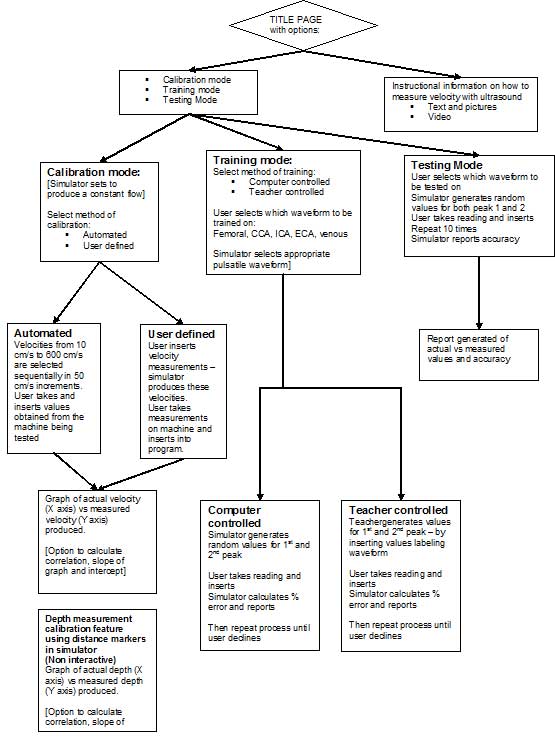- 020 3384 8444
- info@vascular-clinic.com
The introduction of the European working time directive to surgical trainee workplace legislation has severely curtailed operative experience by trainee surgeons (1-3). Also, the length of training programs in the UK is now much shorter than in the past. In the recent past, the public has become far more informed regarding healthcare and expectations of quality are ever increasing. This has lead to pressure for a consultant led service, further reducing training opportunities.Similar workplace regulations in North America is having a similar effect among their trainee population (4;5).
The use of ultrasound and Duplex waveform analysis is essential in diagnosis of arterial and anastomotic stenosis as well as venous reflux. Patient based training is difficult and time consuming. It is widely agreed that the way forward for the craft based medical specialties, in particular surgery is in surgical simulation.
We propose the development of an affordable ‘serious game’ to facilitate training in this difficult to practice and difficult to retain psychomotor and interpretive skill.
The serious game should facilitate trainer – trainee interaction in learning waveform analysis (typical waveform shown below)

We believe that potential users of the serious game would include:
• Vascular Surgical Trainees – arterial and venous stenosis
• Renal trainees – Arterio-Venous fistula assessment prior to creation as well as monitoring of viability post creation
• General medicine trainees – DVT assessment looking for flow augmentation in veins as an indication of patency.
• Hepatology trainees – hepatic and portal vein blood flow to assess for hepatic vein thrombosis and portal hypertension.
• Neurology and stoke trainees- to assess for carotid artery stenosis both in screening and in acute stroke patients.
• Obstetics and gynecology trainees – uterine waveform analysis as a screening test for placental development
The serious game will control a pulsatile flow simulator allowing generation of custom trainer defined waveforms for trainee teaching and assessment.
The software will simulate pulsatile flow characteristics of various arteries and vein for:
• Training in duplex ultrasound skills.
• Testing and accrediting in duplex skills.
The serious game needs to run in two modes:
For a particular waveform pattern which should be first selected:
The software should produce a waveform characterized by specific values of the waveform peaks.
The user then takes the measurements and inputs them.
The software then reports on the actual values and the user can see where they went wrong.
With a significant error – an advice measurement on technique could be displayed to help the user improve on the subsequent effort.
As well as the randomly generated version, the waveform values and subsequent waveform should be directly selectable by a teacher so that the user can be trained on a particular waveform.
For a sequence of waveforms in turn (perhaps 3)
A number of random values of the peaks should be generated and sent in turn to the simulator.
The subject should take the Doppler measurements and input them into the serious game when prompted.
The software then calculates accuracy – perhaps only for the first positive peak or perhaps for both positive peaks and thus produces a score.
The accuracy could be further broken down for the first and second positive peak.

(1) Benes V. The European Working Time Directive and the effects on training of surgical specialists (doctors in training): a position paper of the surgical disciplines of the countries of the EU. Acta Neurochir (Wien ) 2006 Nov;148(11):1227-33.
(2) Lim E, Tsui S. Impact of the European Working Time Directive on exposure to operative cardiac surgical training. Eur J Cardiothorac Surg 2006 Oct;30(4):574-7.
(3) Morris-Stiff GJ, Sarasin S, Edwards P, Lewis WG, Lewis MH. The European Working Time Directive: One for all and all for one? Surgery 2005 Mar;137(3):293-7.
(4) Whalen TV. Duty hours restrictions: how will this affect the surgeon of the future? Am Surg 2007 Feb;73(2):140-2.
(5) Myers JS, Bellini LM, Morris JB, Graham D, Katz J, Potts JR, et al. Internal medicine and general surgery residents’ attitudes about the ACGME duty hours regulations: a multicenter study. Acad Med 2006 Dec;81(12):1052-8.